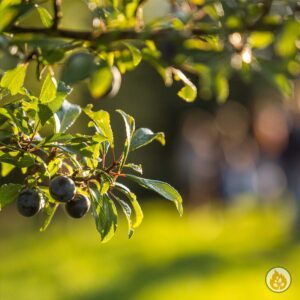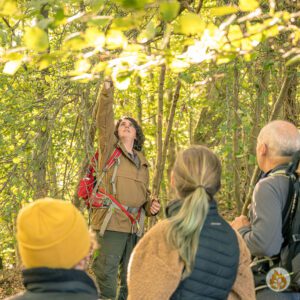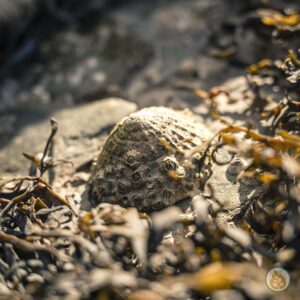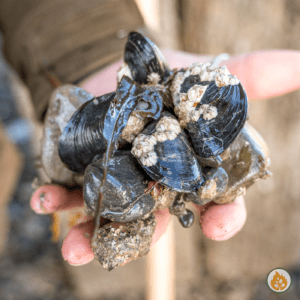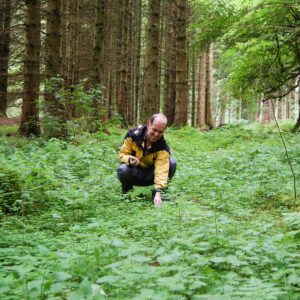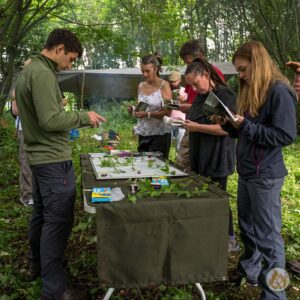
Opposite-Leaved Golden Saxifrage
Chrysosplenium oppositifolium
Where does Opposite-Leaved Golden Saxifrage grow?
This short, green and slightly hairy plant is almost always found in shaded wet soils within a few metres of a body of water – even if that body of water is more of a swamp than a babbling brook. It can be found across the UK and all year round, although it is most noticeable from early Spring until August-September. There are minute and easily-missed golden-yellow flowers that almost appear to blend into the succulent leaves from March until April.
Is Opposite-Leaved Golden Saxifrage edible?
Yes it is, and once you have washed off the soil that inevitably has splashed up onto the plant it’s quite easy to work with too. I tend to use this plant as a component for salads, and the succulent ‘crunch’ combined with a slightly peppery (but not hot) taste makes it a pleasant addition. It works particularly well with balsamic vinegar. I also use it in stir-fries and other dishes where it can be thrown into the pan during the last few minutes for a bit of extra colour and texture. You can see me talk about and harvest some of what is possibly the finest foraged-salad ingredients in the video clip below.
How to identify Opposite-Leaved Golden Saxifrage
Identification against a photo in a guidebook is easy – also look for a ‘mat’ of plants in muddy soils in shady woodlands. The yellow flowers are indistinct, but do show as a yellow hue on the forest floor during the flowering season. There are fine, white hairs on the upper side of the leaves on more mature plants, and short hairs on the stem. These hairs are perfectly edible and do not detract from the wild dining experience! Look out for the similarly-named Alternate-Leaved Golden Saxifrage (Chrysosplenium alternifolium). This looks broadly similar from a distance, with leaves arranged in alternate pairs rather than opposite each other and fewer/less obvious hairs.
Potential dangers and misidentification
It’s a small plant that would be easy to miss, but there isn’t much that is as common that looks remotely like it. Wash all plants to remove possible contamination from soil that will be splashed up onto the stems and leaves during heavy rain.
** A NOTE OF CAUTION **
Foraging and hunting for wild food is a potentially hazardous activity.
Whilst we do our best to make sure these species and wild food guides are as accurate as possible there is ALWAYS the possibility of the user (or the author…) misidentifying a plant or other item, and the descriptions given might also apply to similar toxic plants.
Common names cannot be relied upon as they change from region to region, and there are some similar names for very different plants. When researching species on the internet you can sometimes find a common name referring to a completely different species to the one you are trying to learn about.
You should always be confident of the identification of a plant, fungus or lichen BEFORE you touch it and especially before you put it anywhere near your mouth.
The best way to do that is by checking with a good wild flower key or identification book, and ideally cross-referencing between more than one book.
Or – as all of the cool people say: Never Munch on a Hunch.

Richard is a UK wilderness skills and outdoor safety instructor with over a decade of experience working on expeditions, in SAR, training the military and emergency services.
A passionate forager, hunter, angler and outdoorsman, he has appeared on television and web series numerous times, and is a regular contributor to podcasts, magazines and other publications.





